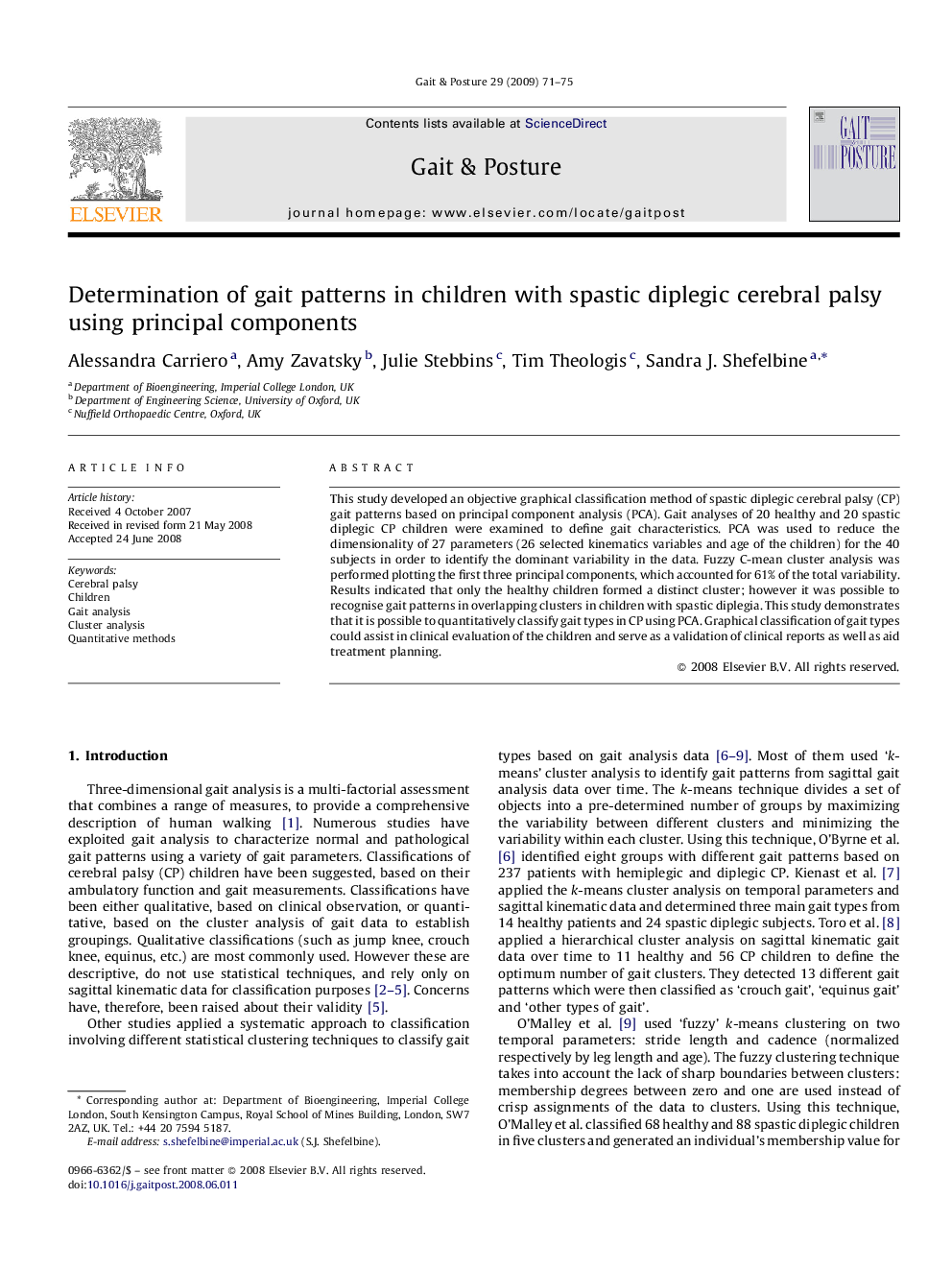| کد مقاله | کد نشریه | سال انتشار | مقاله انگلیسی | نسخه تمام متن |
|---|---|---|---|---|
| 4057957 | 1265705 | 2009 | 5 صفحه PDF | دانلود رایگان |

This study developed an objective graphical classification method of spastic diplegic cerebral palsy (CP) gait patterns based on principal component analysis (PCA). Gait analyses of 20 healthy and 20 spastic diplegic CP children were examined to define gait characteristics. PCA was used to reduce the dimensionality of 27 parameters (26 selected kinematics variables and age of the children) for the 40 subjects in order to identify the dominant variability in the data. Fuzzy C-mean cluster analysis was performed plotting the first three principal components, which accounted for 61% of the total variability. Results indicated that only the healthy children formed a distinct cluster; however it was possible to recognise gait patterns in overlapping clusters in children with spastic diplegia. This study demonstrates that it is possible to quantitatively classify gait types in CP using PCA. Graphical classification of gait types could assist in clinical evaluation of the children and serve as a validation of clinical reports as well as aid treatment planning.
Journal: Gait & Posture - Volume 29, Issue 1, January 2009, Pages 71–75